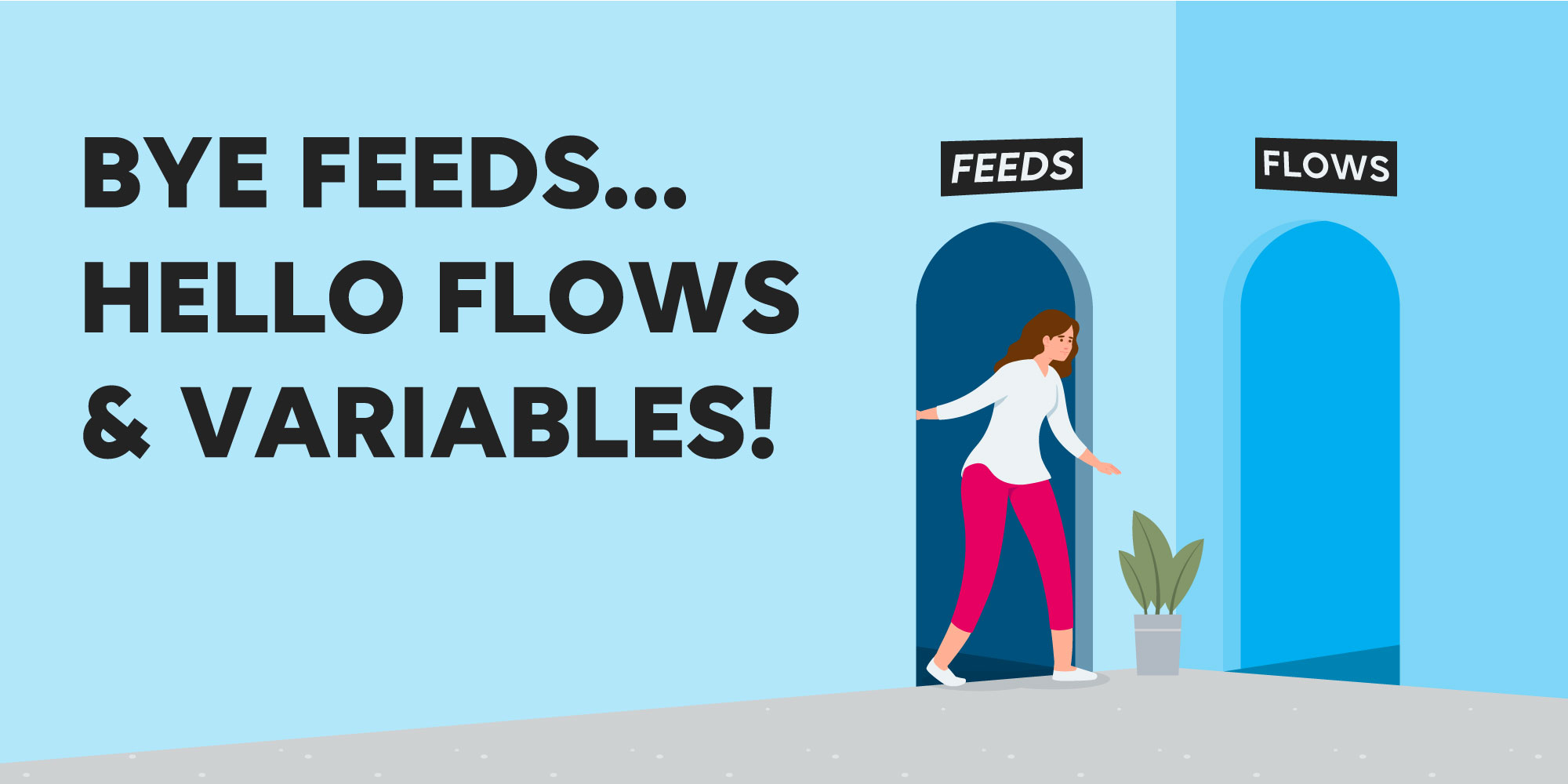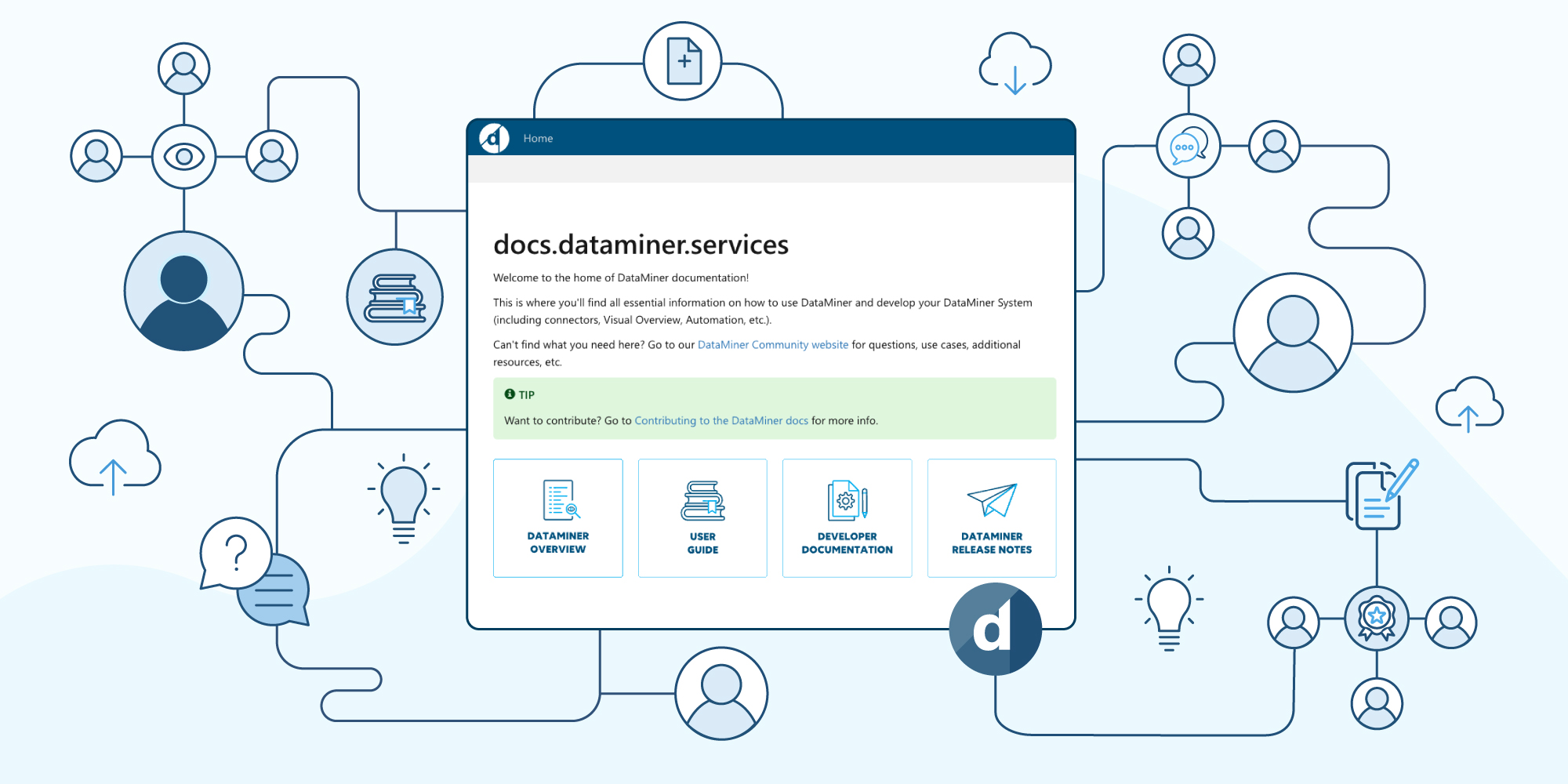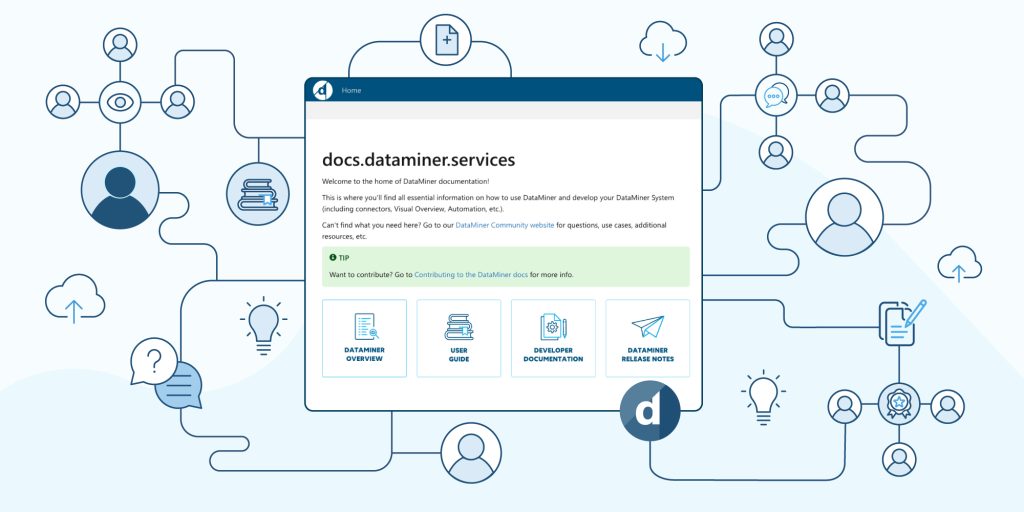The DataMiner documentation is continuously growing and improving. That’s why from time to time we like to provide you with a summary of all things new in the DataMiner Docs.
Here’s a quick overview of the changes we’ve done to the documentation for DataMiner 10.4.12:
- DataMiner 10.4.12 is a big one for the Dashboards and Low-Code Apps modules:
- Variables are a brand-new feature, introducing reusable data objects that can be dynamically updated, making them a versatile way to store information such as text, numbers, elements, and more. Unlike data tied to specific components or queries, variables provide a standalone way for keeping data accessible across various parts of your application.
- Flows are another exciting new feature in this release. With flows, you can modify the behavior of your data objects by applying a series of operators. Transform and adjust your data to ensure information arrives exactly how and when you need it.
- To make the Dashboards and Low-Code Apps UI as intuitive as possible, the data category “Feeds” has been replaced by two separate data categories: “Components” and “URL”. This means that the syntax used to dynamically reference data in text has automatically also been updated. Additionally, the “Feeds” visualization category has been retired and its components have been reorganized under the “General” and “Other” categories.
- The data sources “Query rows” and “Strings”, which could be found in the Data pane of a dashboard or app, are now called “Table” and “Text”, respectively.
- The dropdown, tree, and list components can now also show table data.
- From now on, version numbers are included in the version history of a low-code app.
- In the Proactive alarm settings section of the Augmented Operations alarm settings in Cube, you can now configure which alarms should be triggered based on proactive cap detection. This includes options to set the severity of the alarms and define the trend prediction ranges that will trigger them.
- By clicking the light bulb icon in the top-right corner of a trend graph in Cube, you can add time-scoped related parameters, helping you uncover hidden connections in your data. Previously, this feature only suggested parameters from the same element or other elements within the same service. However, the latest update now also allows you to add parameters that are globally related, broadening the scope of the insights you can gain.
- To enhance the security of connector communication, SSL/TLS certificates will now be validated by default for all newly created HTTP elements.
- The default number of simultaneously running SLProtocol processes has been increased from 5 to 10.
- If you are using a shared Windows desktop session where multiple DataMiner users sign in with SAML authentication, the new Clear browser cache on signout setting may be of interest to you! It clears the Edge WebView2 browser cache when signing out, ensuring the SAML authentication window appears for the next user and helping to prevent login issues.
- A new card setting in Cube now allows you to open EPM cards in a separate, undocked window.
Elevate your dashboards and apps with flows and variables
DataMiner 10.4.12 introduces two powerful new features to your dashboards and low-code apps: flows and variables! These new concepts will help you create smoother, smarter workflows and more powerful data displays.

Content Expert: Robin Debel
But those are not the only things we’ve changed recently!
- Thorough documentation was added on the DataMiner Health Check tool, including an installation and configuration guide.
- Meet our newest monitoring & management solution: the Performance Analyzer solution. It streamlines the process of analyzing the performance of a solution, making sure it is up to the required standards.
- A best practice was added with information about writing documentation for your Catalog item.
- Explore our new tutorials:
- Getting started with the Smart Trap Processor: In this 30-minute tutorial, you’ll learn how to get started with the Smart Trap Processor tool and define rules for collecting and processing SNMP traps from various sources.
- Getting started with DCF: In this 20-minute tutorial, you’ll learn how to get started with DataMiner Connectivity Framework based on a basic example.
- Getting started with the Ping Monitoring tool: In this 15-minute tutorial, you’ll learn how to use the Ping Monitoring tool for network monitoring and diagnostics.
Noticed something that could be improved in the DataMiner documentation? Your feedback can make the difference! Submit an issue or propose your changes on GitHub! If you’re a DevOps Professional, you’ll also score some points in the process 😊
Previous DataMiner releases

BLOG
What’s new in the documentation for the 10.4.11 release?
Find out what’s been added to the documentation for DataMiner version 10.4.11.

BLOG
What’s new in the documentation for the 10.4.10 release?
Find out what’s been added to the documentation for DataMiner version 10.4.10.